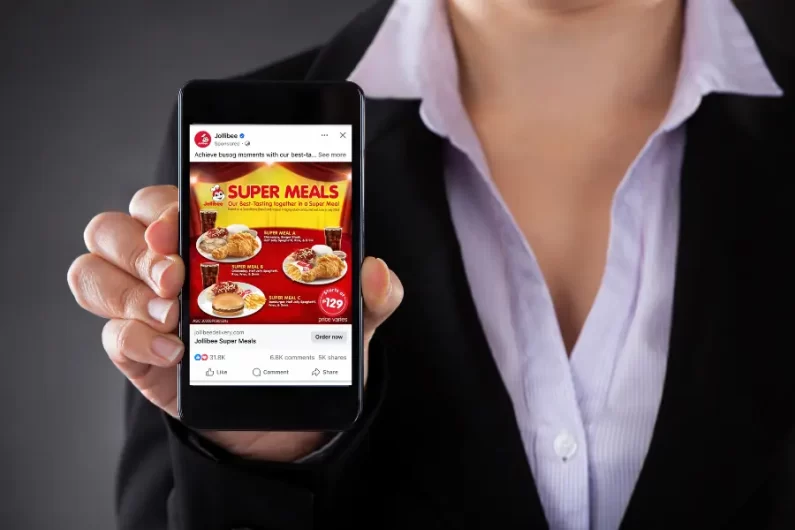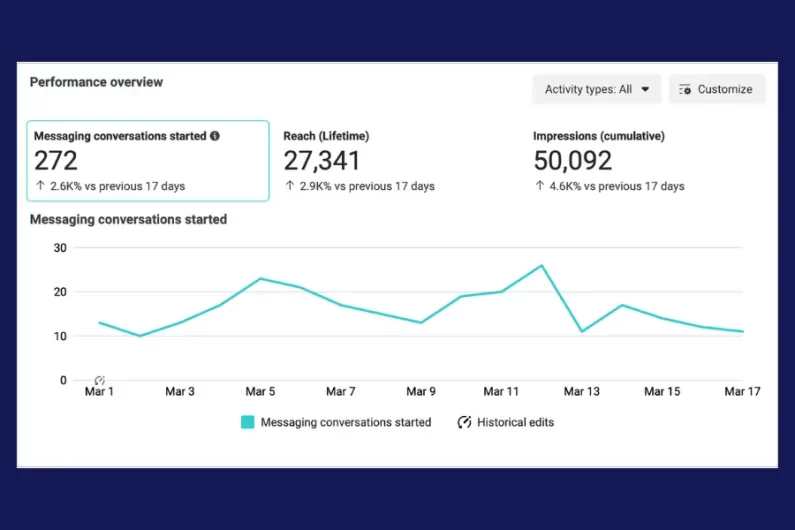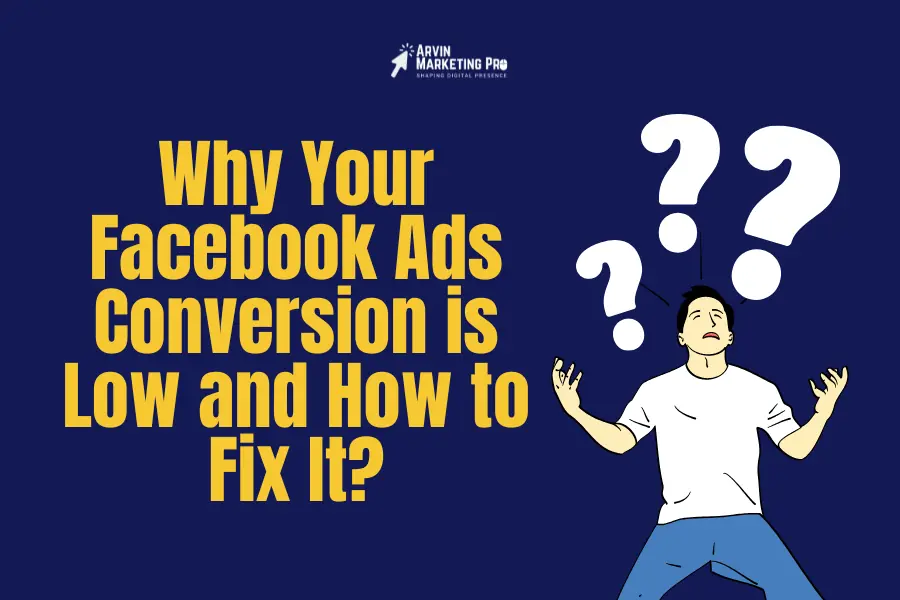Running Facebook ads can help businesses connect with potential customers on a massive scale. When properly managed, a Facebook ads campaign can deliver impressive results, boosting online sales. Yet, many business owners and marketers find their Facebook ads aren’t converting as expected, leading to frustration and financial loss.
Several factors impact Facebook ads conversion, from targeting the right audience to crafting compelling visuals and managing ad frequency. Whether you’re handling ads yourself or collaborating with a virtual assistant skilled in digital marketing, understanding these elements is essential. This guide explores why your ads may not be converting and offers solutions to improve performance. With the right approach, your Facebook ads campaign can go from lackluster to impactful.
Poor Targeting: Reaching the Wrong Audience
One of the primary reasons for poor Facebook ads conversion is ineffective audience targeting. Facebook allows detailed targeting by age, location, interests, demographics, and behaviors. However, it’s easy to miss the mark. If ads reach an audience that doesn’t resonate with your brand, even a well-crafted message will likely fall flat.
Why Audience Targeting Matters for Facebook Ads Conversion
Audience targeting connects your Facebook ads campaign with users most interested in your product or service. Reaching the right audience is crucial for driving conversions and enhancing the Facebook ads conversion rate. Ads targeted too broadly may gain impressions but fail to produce meaningful engagement or sales. Conversely, ads targeted too narrowly risk missing potential customers, reducing your campaign’s reach and effectiveness.
Audience targeting involves analyzing your brand’s ideal customer profile, identifying their needs, interests, and behaviors. The more aligned your targeting is with your customer base, the better your Facebook ads campaign performance will be.

Tools to Enhance Targeting in Your Facebook Ads Campaign
- Audience Insights: This Facebook tool provides valuable data about current followers, revealing demographic details and interests. Audience Insights helps refine targeting by identifying common characteristics among your engaged followers. By understanding your audience’s preferences, you can create ads that resonate with them.
- Lookalike Audiences: This feature creates an audience based on users who share traits with your existing customers. It’s a data-driven way to reach people similar to your brand’s loyal customers, increasing the likelihood of Facebook ads conversion. Lookalike Audiences are especially useful for expanding reach while staying relevant to your customer profile.
- Retargeting Ads: Retargeting allows you to reach users who have previously interacted with your brand but didn’t convert. By reminding them of your product or service, you keep your brand top-of-mind. Retargeting ads can significantly improve conversion rates as they target users already familiar with your brand.
Fine-Tuning Audience Segments
Refining audience segments involves testing different demographics, interests, and behaviors. Running A/B tests on audiences helps identify which groups respond best to your ads. Experiment with targeting settings to see which combination of factors yields the highest engagement and conversions. Keep refining based on data from Audience Insights, Lookalike Audiences, and retargeting metrics.
Working with a virtual assistant skilled in audience research and data analytics can simplify this process. Virtual assistants can analyze audience metrics, manage retargeting campaigns, and make targeting adjustments to optimize ad performance.
Avoiding Common Targeting Pitfalls in Facebook Ads Campaign
Overlooking audience location is a frequent targeting mistake, especially for local businesses. Ensure your Facebook ads campaign focuses on relevant geographical locations, particularly if your business depends on local customers. Another common pitfall is targeting solely based on interests without considering behavior. Analyzing behaviors alongside interests allows you to reach users more likely to act on your offer.
Audience targeting is essential for Facebook ads conversion. By understanding your audience’s preferences, testing groups, and using Facebook’s targeting tools, you can significantly increase conversion rates and make your Facebook ads campaign more effective.
Related Article: The Impact of Paid Ads on E-commerce Sales
Weak Ad Copy or Visuals: Failing to Catch Attention
In a fast-scrolling world, ad copy and visuals are essential for capturing attention. If your ad copy lacks clarity or your visuals are unappealing, potential customers may ignore your ads. For effective Facebook ads conversion, a powerful message paired with engaging visuals is crucial.
Creating Compelling Ad Copy for Facebook Ads Conversion
Your ad copy should speak directly to your audience, addressing their needs or solving a problem. The best-performing ad copy focuses on benefits, not just features, and uses simple, action-oriented language.
- Highlight Benefits: Instead of just listing features, tell the audience how your product or service can improve their life. Clear benefits resonate more with potential customers than a list of specs.
- Include a Strong Call-to-Action (CTA): Your CTA should encourage users to take immediate action, such as “Shop Now,” “Get Your Free Trial,” or “Learn More.” A compelling CTA directs the audience on what to do next, improving the chances of a click or conversion in your Facebook ads campaign.
- Keep It Simple: Avoid technical jargon or lengthy sentences. Concise copy makes your message clearer and increases readability, ensuring potential customers understand your offer quickly.
Enhancing Facebook Ads Conversion with Quality Visuals
Using high-quality, relevant visuals is essential in a visual-first platform like Facebook. Your visuals should complement the message, capturing attention and creating interest.
- Use Bright, High-Resolution Images: Bright, high-quality images stand out more in a user’s feed. Ensure your photos are relevant to your product and that they’re sharp and professional-looking.
- Leverage Video Content: Video ads have a higher engagement rate on Facebook. Short videos that highlight the product in action or demonstrate its benefits can captivate your audience and boost Facebook ads conversion rate.
- Align with Branding: Visual consistency with your branding makes your ad recognizable. Use colors, fonts, or imagery that represent your brand, building familiarity with the audience.
Testing and Optimizing Creatives for Maximum Impact
Testing different versions of your ad copy and visuals, known as A/B testing, can reveal what resonates most with your audience. Create multiple versions of your ad and observe which ones receive the most engagement. Regular testing and optimization lead to higher Facebook ads conversion rates by focusing on what works best.
Virtual assistants experienced in content creation can assist with writing effective ad copy, designing visuals, or setting up A/B tests. Delegating these tasks ensures that your Facebook ads campaign is engaging and professionally crafted.
Avoiding Common Pitfalls in Ad Copy and Visuals
Avoid vague ad copy that doesn’t clearly state the benefits of your product. If users are unsure about your offer, they’re less likely to engage. Also, steer clear of low-quality images or stock photos, as they can look unprofessional and reduce credibility. Instead, use real photos of your product or service to create a more authentic impression.
Engaging copy and visuals are key to high-performing Facebook ads. Focusing on clear, benefit-driven language and eye-catching imagery makes your ads stand out and boosts conversion potential.

Ad Fatigue and Frequency: Overwhelming Your Audience
Repeated exposure to the same ad can lead to “ad fatigue,” causing users to lose interest. Managing ad frequency is crucial for maintaining engagement and achieving a higher Facebook ads conversion rate.
Understanding Ad Frequency in Facebook Ads Conversion
Ad frequency refers to the average number of times a user sees your ad. While some exposure is necessary to create familiarity, too much can annoy your audience. Ideally, frequency should range between two and three views per user, depending on your industry and audience.
- Monitor Frequency Metrics: Facebook provides frequency metrics within its ad manager. Monitoring these figures helps identify when users may start experiencing ad fatigue, allowing you to make adjustments as needed.
- Adjust Frequency Based on Performance: If conversion rates start to decline while frequency rises, it may be time to adjust your campaign. Reducing frequency can help maintain engagement and prevent audience disengagement in your Facebook ads campaign.
- Rotate Creatives Regularly: Switching up your ad creatives, including visuals and copy, keeps content fresh and engaging. Rotating ads every few weeks is a proactive way to avoid ad fatigue and retain user interest.
Campaign Budget Optimization (CBO) for Balanced Reach
Facebook’s Campaign Budget Optimization (CBO) tool allocates budget across your ads based on performance. This feature prevents overspending on ads with high frequency and helps allocate more budget to effective ads. CBO provides a balanced reach that avoids saturating your audience with the same ad.
Using Retargeting Without Overexposure
Retargeting ads can reach warm leads—users who have shown previous interest in your brand. However, frequent retargeting can also lead to ad fatigue. Setting a reasonable retargeting window, such as 7-14 days, can ensure users aren’t overwhelmed with repeated messages in your Facebook ads campaign.
Virtual Assistant Support for Frequency Management
Virtual assistants skilled in social media marketing can monitor ad frequency metrics, adjust budgets, and implement CBO settings. This support ensures that your Facebook ads campaign maintains a balanced reach without exhausting your audience.
Avoiding ad fatigue is essential for keeping your audience engaged and improving conversions. By monitoring frequency and rotating creatives, you can maximize your Facebook ads campaign effectiveness.
Lack of Consistent Follow-Up: Ignoring Warm Leads
Warm leads are users who have interacted with your ad but didn’t convert. Without consistent follow-up, you miss the opportunity to nurture these leads and boost your Facebook ads conversion rate.
Importance of Retargeting Warm Leads in Facebook Ads Campaign
Retargeting ads reach users who previously visited your site or interacted with your content. These ads keep your brand top-of-mind and encourage users to return and complete a purchase. By retargeting users with personalized messages, you increase the chances of conversion in your Facebook ads campaign.
- Dynamic Retargeting Ads: These ads automatically display products that a user viewed on your website. Dynamic ads provide a tailored shopping experience, making users more likely to revisit your site and buy.
- Offer Exclusive Promotions: Incentives like discounts or free shipping for retargeted users can encourage conversion. Exclusive offers create a sense of urgency and reward users for returning to your site.
- Use Email Drip Campaigns: If you collect leads, email drip campaigns can nurture potential customers further down the sales funnel. Drip emails provide timely updates, relevant content, or exclusive offers that guide users back to your site.
Social Proof in Retargeting Ads
Social proof, like customer testimonials or product reviews, can increase trust among warm leads. Adding testimonials to retargeting ads helps reassure users who may be hesitant, encouraging them to proceed with the purchase.
Managing Follow-Up with Virtual Assistants
Virtual assistants with experience in customer relationship management (CRM) can set up retargeting ads, manage email drip campaigns, and analyze performance. They can streamline follow-up processes, ensuring that warm leads receive consistent, relevant engagement.
Common Pitfalls in Follow-Up
Avoid aggressive retargeting tactics, which may come off as intrusive. Instead, space out retargeting ads and emails to maintain user interest without overwhelming them. Tailoring follow-up messages to individual preferences makes users feel valued, increasing conversion rates.
Consistent follow-up with warm leads is essential for maximizing conversion potential. By setting up retargeting ads and personalized email campaigns, you can increase the chances of converting users who have already shown interest.

Case Studies on Facebook Ads Conversion: Learning from Real-World Successes
When it comes to Facebook ads, nothing illustrates success better than real-world case studies and research that show proven strategies for improving Facebook ads conversion. Case studies not only highlight effective techniques but also demonstrate the impact of a well-executed Facebook ads campaign. Let’s dive into a few documented examples to see what worked, why it worked, and what you can take away to improve your own campaigns.
Case Study 1: Domino’s Pizza Spain – Increasing Engagement and Orders with Dynamic Ads
Domino’s Pizza Spain aimed to improve online orders and increase brand visibility in a competitive fast-food delivery market. Recognizing the crowded nature of their industry, Domino’s implemented Facebook Dynamic Ads to create personalized, visually engaging experiences for users. Their goal was to drive higher Facebook ads conversion rates by reaching audiences who had previously shown interest in their menu and by creating an ad experience that felt relevant and engaging.
Strategy and Execution
- Dynamic Ads for Retargeting: Domino’s leveraged Facebook Dynamic Ads to serve personalized ads to users who had visited their website. This retargeting strategy showcased specific menu items the users had previously viewed, adding a personal touch and encouraging a return to the Domino’s site.
- Engaging Video Content: Domino’s created short, visually appealing video ads that highlighted their most popular pizzas and promotional offers, such as “2-for-1” deals. The videos were optimized for mobile viewing, designed to grab attention quickly and keep users engaged with the brand.
- Special Offers with Strong CTAs: To prompt immediate action, Domino’s used promotions like “2-for-1” offers and included clear calls-to-action (CTAs) such as “Order Now” within their ads. This approach tapped into a sense of urgency and made it easy for users to place orders directly from the ad.
- Multi-Platform Consistency: Domino’s campaign was consistent across Facebook and Instagram, allowing them to reach a larger audience. The cross-platform strategy boosted visibility and engagement, leading to a cohesive brand presence across social media.
Results
The Facebook ads campaign delivered significant results for Domino’s Pizza Spain:
- Increased Orders: The dynamic ads led to a significant increase in online orders, particularly from users who had been retargeted based on previous website visits.
- Higher Engagement: Video content resonated strongly, helping boost engagement with the brand and ensuring Domino’s stayed top-of-mind for potential customers.
- Enhanced Brand Awareness: The campaign helped Domino’s broaden its audience reach, reinforcing brand awareness and solidifying their place in the competitive Spanish market.
By using Facebook Dynamic Ads and tailoring their ad experiences to individual users, Domino’s Pizza Spain effectively enhanced engagement and conversion rates. The combination of retargeting, video content, and compelling CTAs created a user-centered ad experience that translated into real sales growth.
For more details, check out the full case study here: Domino’s Pizza Spain Success Story.
Case Study 2: Seltzer Goods – Driving E-Commerce Sales with Targeted Facebook Ads
Seltzer Goods, a lifestyle brand known for its whimsical stationery and gift items, faced the challenge of driving online sales in a competitive e-commerce space. They partnered with Inflow, a digital marketing agency, to design a highly targeted Facebook ads campaign that would increase sales, attract new customers, and build brand awareness.
Strategy and Execution
- Focus on High-Intent Audiences: Inflow worked with Seltzer Goods to define and target high-intent audiences—individuals who had either visited the website, added items to their cart, or shown interest in similar lifestyle brands. This targeted approach increased the likelihood of reaching users who were more inclined to convert.
- Carousel Ads for Product Variety: Seltzer Goods used Facebook Carousel Ads to display multiple products in a single ad. This format allowed them to highlight a range of items, providing a “virtual store window” for viewers. Carousel Ads gave users options, increasing the chances of finding a product that appealed to their tastes and encouraging them to click through to the website.
- Discount-Driven Incentives: Offering a limited-time discount, Seltzer Goods created a sense of urgency that encouraged users to act immediately. They used ad copy that reinforced the value of the discount, such as “Save 20% on your first purchase,” which served as a compelling motivator for first-time buyers.
- A/B Testing for Optimization: Throughout the campaign, Seltzer Goods tested different ad creatives, audiences, and messaging. This A/B testing allowed them to pinpoint which ads performed best, optimizing their campaign based on real-time data and making adjustments to maximize Facebook ads conversion.
Results
Seltzer Goods’ Facebook ads campaign achieved impressive results:
- Increased Conversion Rate: The combination of high-intent targeting and carousel ads led to a notable increase in Facebook ads conversion rates, particularly among first-time website visitors.
- Revenue Growth: The targeted campaign generated substantial revenue, with the discount offer and A/B-tested ads significantly boosting sales.
- New Customer Acquisition: By targeting high-intent users and leveraging Facebook’s targeting features, Seltzer Goods expanded their customer base, bringing in a wave of new buyers.
Seltzer Goods’ success underscores the importance of targeting high-intent audiences and offering incentives like discounts to drive conversions. The use of Carousel Ads and A/B testing allowed them to showcase multiple products effectively while continuously optimizing for improved results.
Read more about the Seltzer Goods case study here: Seltzer Goods Facebook Ads Success.
Lessons Learned from These Case Studies
These case studies from Domino’s Pizza Spain and Seltzer Goods reveal valuable strategies that can improve Facebook ads conversion:
- Personalize and Retarget: Domino’s Pizza Spain’s dynamic ads showed how personalized retargeting ads can re-engage interested users and prompt conversions.
- Engage Through Visuals: Both brands used eye-catching visuals—videos for Domino’s and Carousel Ads for Seltzer Goods—to capture attention and drive action. Visual appeal is critical for standing out in a busy social media feed.
- Offer Incentives: Seltzer Goods’ discount-driven ads incentivized users to make their first purchase, proving that exclusive offers can be powerful motivators for conversions.
- Optimize with A/B Testing: Testing different creatives, messaging, and audience segments helped Seltzer Goods achieve better results and allocate ad spend effectively.
By incorporating these strategies, you can create Facebook ads that resonate with your target audience, improve engagement, and drive conversions. Whether through retargeting, personalized offers, or visually engaging formats, these proven tactics can enhance your campaign’s effectiveness and help maximize your Facebook ads conversion rate.
